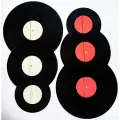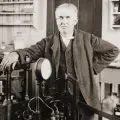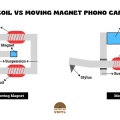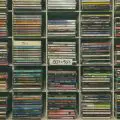To ask ‘do record players need electricity’ might seem like a silly question to some, but we are treading strange, antiquated ground where nothing ought to be taken for granted. Thus, this is a perfectly valid question, and one that should be answered with the utmost seriousness.
The history of records, record players, turntables, and the like is utterly synchronized with the history of recording technology itself, which has, over the past century at least, been developing and changing at a rapid and almost exponentially illogical rate. Thus, anyone would be forgiven for wanting to brush up on such a seemingly simple question as this.
Even the way that electricity works and the way we understand it has changed along the way. This is not just in terms of our relationship with data across the world and the rapid sharing of it online to anyone anywhere, anytime. Think about the different types of plug sockets you can encounter in different regions of the world, for example.
A short plane, train, boat, or car journey across national boundaries could have you using a completely different type of electricity. So, it is thus that we ought to take such seemingly simple questions and to invert them, learning to expect the expected.
Table of Contents
Electricity?
Such seemingly simple questions as ‘do record players need electricity’ actually have relatively profound answers, ones that run parallel and in correlation with the history of recording technology itself, at least for a time.
The original record players, the phonographs and gramophones, were, in fact, constructed in a time when electricity was far from the widespread and international phenomenon that it is today. Sure, this kind of recording technology luxury was certainly not available to the masses, but I am willing to bet that consistently running electricity was available to even less of the population.
Thus, these original record players were operated without electricity. Instead of the electricity that we have become so accustomed to in the last half a century, these early record players were operated with a hand crank mechanism in a truly analogue fashion. The idea was that the physical effort exerted into this mechanism would produce friction and energy, which would then be transmitted into the turntable and its platter, spinning the respective record disc beneath the stylus in such a way that it would be directed sequentially towards the disc’s center.

These acute vibrations, as transmitted from the disc’s grooves to the stylus, would then be conducted and fed through a conical, horn-like speaker, and it would be like so that listeners would be able to enjoy the music on the disc. In this sense, rendered so starkly, the miracle of recording technology really does not sound like so much of a miracle or like such a delicate maneuver.
It is, however, in the finer details that the wonder really shines. Getting a machine to precisely carve accurate enough grooves in a vinyl disc that it is transmitted through a thin needle as vibrations? It sounds like crazy talk!
Electricity!
Needless to say, this kind of technology was soon surpassed in the history of records, just as vinyl records eventually were entirely before their post-millennial boom again. It is not hard to see why either, or at least it ought not to be. It is, put simply, antiquated technology.
The action of the crank could very easily fall into disrepair, coming into contact with Braun, and varying different shades of it, repeatedly throughout its lifetime. The crank could also often fall short, the power running out in the middle of a record. Whatever was left of a sacred listening experience through the meager sound quality and the various crackles and distortions would have been all but spoiled.
This not only has disastrous effects on the sanctity of the listening experience, but it also has an effect on the disc itself, causing the sharp needle to lie at a point in the record that it ought not. So, the already low-fidelity recording quality would have been further pockmarked!
So, it should not be hard to see why electricity was called upon to take the place of kinetic energy. Though certainly not as strong as it is in the present day, its flow and current were still far more reliable than that of the manually pumped hand crank of the gramophone. This, thus, provided a far more sanctimonious and holistic listening experience, where listeners could simply place the stylus on the edge of the record and let the invisible mistress of electricity work its magic. More automation, an automatic motor, and electricity are needed to fan the flames.
Using electricity also meant that more elements could get involved, and more audiophilic equipment to improve the entire listening experience! Thus, to ask, ‘do record players need electricity’ is not such a silly question at all!
Final Tones
In most circumstances, you will require a stable electrical connection in order to power your more modern-style record player. Thankfully, this is a luxury that much of the Western world can’t seem to escape from!
Where the gramophone is entirely self-sufficient in terms of the energy it needs to generate to actually play the discs, these more modern record players have to rely on the current of electricity in a given area. And this is a luxury, easy as it is to forget for some of us.
Thus, we should not take for granted what others do not and/or cannot have.
FAQs Do Record Players Need Electricity
Can a record player work without electricity?
The original record players, the phonographs and gramophones, were, in fact, constructed in a time when electricity was far from the widespread and international phenomenon that it is today. Sure, this kind of recording technology luxury was certainly not available to the masses, but I am willing to bet that consistently running electricity was available to even less of the populous. Most record players today, however, do rely on electricity, or at the very least some sort of power such as batteries.
How are record players powered?
More modern record players will be powered with electricity in one form or another. This might be from mains electricity, directed from a mains plug socket via a cable and into the record player. There is variation even in this, where the power could be going to the record player entirely or just to the individual elements, the turntable, the stereo/amp, etc. More portable record players might even be powered with batteries, another form of electricity, so that they can be taken out and about wherever the listener might desire. Even these are more reliable in terms of listening experience than the antiquated hand-crank gramophone.
How are phonographs powered?
The now utterly antiquated phonograph or gramophone record player, from which more modern record players take their supreme inspiration, is powered via more analogue means. Energy will always be required to power such things, such pieces of technology. This has been the same since the beginning of time; all existence is a mere transfer of energies. And the gramophone is no different, though in this case, instead of relying on electricity like most modern record players, they rely on kinetic energy via a hand crank mechanism.





